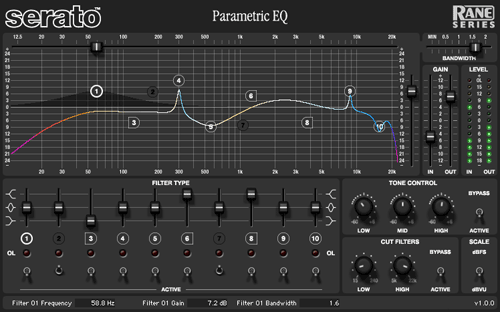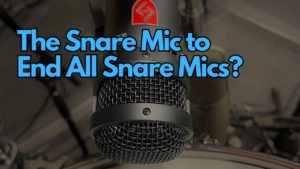
It’s Easter So Let’s Try Something New…
Well, it wouldn’t be Easter without trying something new and untested. Last year I re-tuned and reconfigured the PA for LCR. This year we’re trying something a little smaller, but there’s enough risk involved to help keep us awake through all the services. First a little background…
One of the biggest challenges for me in the sound reinforcement arena is dealing with lav/headworn/your-favorite-spoken-word-microphones–let’s just call these all “lav” mics to make it easy. No matter what the room, system, or talent, it always seems inevitable that I will have to deal with gain before feedback issues. It’s generally a winnable situation, but it’s still a pain.
About 3 years ago I started taking a new approach to dealing with feedback on lav mics that I’m still using today. It’s very simple. I take all of the lav mics and run them through a subgroup. Then I insert an EQ on the group to ring out the mics. My thinking was since I use the same mic type on every actor/pastor/etc., they’re all going to have the same general problems on the same stage in the same room. I then get a volunteer to stick a mic on their head and walk around the stage talking here and there while I ring it out.
I find several advantages from doing this. For starters it gives me a consistent sound when using multiple lavs; there is nothing more frustrating & distracting for me than to go to a church where every actor/pastor/etc. has a completely different character to their voice. This approach also frees up the individual channel EQ’s for tweaking the tone of the talent’s voice. And of course my favorite advantage is I only have to ring out ONE mic; did I mention how much I hate ringing out mics?
For the last 3 years I’ve been using a 31 band graphic EQ for my group feedback reduction purposes. It’s worked, but it hasn’t really been the best solution. It’s not the most accurate way to grab feedback and pull it out, and the filters are often wider than they really need to be. When using a 31 band, I have often found myself doing a LOT of cutting to the point of practically reducing the gain structure of the overall spectrum which sort of defeats the purpose of using the EQ when you’re getting the equivalent of turning down the whole thing. Another issue is that using a lot of EQ can have adverse effects on overall sound quality so it takes a lot of time to really fine tune this even when cheating with an RTA, and I typically always use one; what can I say, IEM use has made me really rusty at this.

So this week I bit the bullet and ordered the Serato Rane Series Parametric EQ plugin after we had a bit of feedback during our first service last Sunday. It’s a 10 band parametric EQ that I’m swapping my 31 band graphic for. On Tuesday afternoon my associate audio director put a mic on, and we spent some time with Smaart’s spectrograph fine tuning the new EQ plugin. Once we had the mic playing nice, I flipped the Venue into virtual soundcheck mode to see what our pastor would sound like running through the new EQ. I was happy to hear that he was actually sounding a little more natural right off the bat without tweaking his channel EQ at all.
In theory, we should be good to go for this week’s services, however, there is still a bit of risk simply because we’ve never gone live in a service with this. AND let’s just be frank here, we’re dealing with our pastor’s mic and pastor mics seem to be a touchy subject at every church. During our tests I had about 9-10 dB of gain than before so in theory we should have no trouble. Just to be safe we’ll be ready to go with our old faithful 31 band, but I’m looking forward to this working out because I think it sounds better. Friday night is our first Easter service so we can capture for our campuses, and soundcheck will be our first test of the new EQ. I’ll add a comment on how it goes.
If you’ve got an approach for dealing with lav feedback on pastors and actors, please add it to the comments because I’m always looking for new approaches to dealing with this.






Well, it didn’t work at soundcheck so we are “old school” for Friday night. We’ll have to keep working on it.
Any particular reason you went with the Rane? Do you guys have the Waves LIVE bundle?
We still haven’t totally “retuned” our room since we installed the Venue. I’m still in playing with new plugins mode.
I really like the Waves C4 for vocals. Also, we have the Drawer Tour Buss and I love have the Filter (high and low pass) inserted on all vocal/speaking mics.
I went with the Rane primarily because it’s a 10 band EQ.
We don’t have the Waves bundle, and I have absolutely ZERO plans to purchase it. I was very disappointed in them at hocking plugins that are almost 10 years old at an inflated price and leaving out the cool newer stuff like the SSL and API plugs. I think there are plenty of other plugin manufacturers out there that can get you the same results like McDSP, for example. The Waves stuff isn’t bad, it’s actually good, but I don’t appreciate their approach to the Venue at all.
Now, if Waves puts out the SSL and API stuff, I would be willing to look at things, but the only way I’ll end up with the Live Bundle is if someone gives it to me.
I was just curious if you personally had a preference on a brand and model for Lavalier Mic’s, and why.
Thanks.
We use Sennheiser MKE2s for lavs…although try to stay away from them and use headmics, typically the countryman e6…although we have other headmics too. Shure Beta 53, I think, sounds incredible but it much bigger and uglier than an E6 and also have a DPA head mic that is somewhere in between.
Well, I can’t stand real “lavalier” mics in live environments. They are just more trouble than they’re worth most of the time. Plus every time I go see a musical ala Wicked, Spamalot, etc., there doesn’t seem to be a lot of effort put into hiding lav mics on actors so for my applications where visibility is less of an issue I run away from lavs. The last time I almost had to use a lav was when Charles Stanley came to speak at the Drive Conference. We had a lav ready to go, but he brought his own Countryman E6.
As far as headworn microphones, most of my experience has been with the Countryman E6 which I like. We recently added a couple of DPA 4061’s to our inventory which sound a little better, but look not so good since they’re so huge. But if looks aren’t a factor I would probably go to the DPA first.
When I was doing field recording for broadcast where we were actually hiding mics, I used a lot of TRAM lavs which seemed to work all right.
There are a lot of different lavs out there so it’s probably not a bad idea to check some different stuff out. I honestly haven’t done a lot of experimenting in this area. When I started using the Countryman stuff it was so far beyond the lavs we’d been using before that I didn’t care if there was something else better. I think the DPA stuff is better, but if looks matter it’s probably not going to work for most applications.
The Sennheiser MKE2’s are pretty popular for theatrical use and worth looking into if you have to use lavs.
We’ve been using the DPA 4061 (sub miniture lav mic) on our pastor and have never had any issues getting it to sound good or with GBF. With that said I still prefer the E6 or the DPA 4065 headset mics.
Scott
Dave, I have a question for you. Do you have a dB target range for speech?
I’ve come to believe that intelligibility for a 40+ minute sermon is all about listener fatigue and attention span. I think sometimes people don’t know they’re working hard to listen and wonder why they’re tired after sitting through a sermon. A loud voice for too long can be just as fatiguing. I think the pocket is 62 to 72dBA with peaks at 74. If a speaker wants a lav mic I’ll sound-check them and if I can’t get 72dB before feedback I’ll plead with them to wear a DPA for their own good.
For lav EQing techniques, a big step forward for me was making friends with 800 Hz when it’s not ringing. It’s a pet peeve freq but I always get bit trying to force an FM radio announcer tone out of a lav mic.
Sam that’s usually about where we’re running things. I read somewhere that conversation level between two people is approximately 74dB, but a bit lower than that feels better to me.
Great tip on EQ’ing groups, Dave. I used the same concept quite a bit at my last church for dramas. I would run all the drama mics into a sub and patch in a Behringer UltraCurve Pro (’cause that’s all we had…). It worked well, though; I could switch back and forth between the RTA and Para to kill the rings very quickly. To save the tonal quality, I kept the Q as narrow as possible. Because it was 2 channel, I could use the other side for choir mics.
I’m a big fan of the technique, and it definitely beefs up GBF.